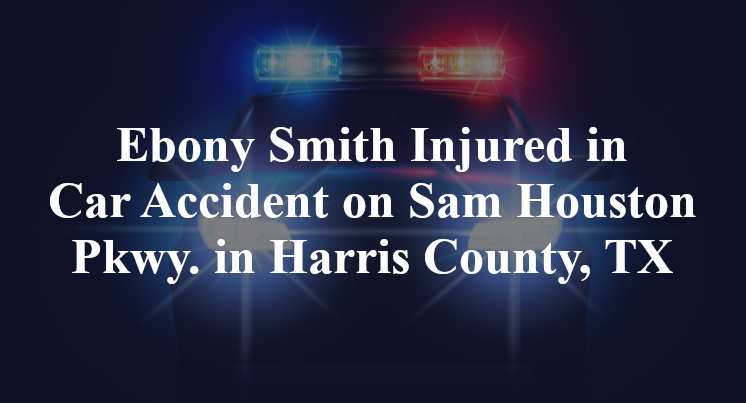Ebony Smith Injured in Car Accident on Sam Houston Pkwy. in Harris County, TX
Harris County, TX — July 1, 2024, Ebony Smith was injured due to a car accident shortly after 9:15 p.m. along Sam Houston Parkway West.
According to authorities, 27-year-old Ebony Smith was traveling in a westbound Pontiac on North Sam Houston Parkway West at the Hollister Road intersection when the accident took place.

The intersection is controlled by a traffic signal. Officials indicate that, for as yet unknown reasons, a northbound Infiniti SUV entered the intersection at an unsafe time, failing to heed the red light given by the traffic signal. A T-bone collision consequently occurred between the right side of the Infiniti and the front-end of the Pontiac.
Smith reportedly sustained serious injuries over the course of the accident. She was transported to a local medical facility by EMS in order to receive necessary treatment. Additional details pertaining to this incident are not available at this point in time.
Commentary by Attorney Michael Grossman
Intersections controlled by traffic signals are supposed to provide clarity and structure—but when someone runs a red light and another person ends up seriously hurt, the situation becomes anything but clear. That’s when a deeper look becomes necessary.
1. Did the authorities thoroughly investigate the crash?
In crashes involving signal violations, it’s crucial to verify exactly who had the right of way. Was the traffic light timing reviewed and matched against the vehicle movements? Did investigators obtain nearby surveillance footage or witness accounts that could confirm what each driver saw and did? Without that verification, it’s easy to assume fault based on initial impressions rather than confirmed facts. That’s a risk no serious injury case should carry.
2. Has anyone looked into the possibility that a vehicle defect caused the crash?
If the Infiniti SUV truly entered on a red, it’s natural to point to driver error. But mechanical issues could also explain that move. Brake failure, sensor malfunction, or even electronic stability problems might have caused the vehicle to continue through the intersection unintentionally. And while the Pontiac is described as hitting the side of the SUV, the force of the collision still raises questions about whether its systems—such as forward collision alerts or braking assistance—responded properly. If these vehicles weren’t inspected soon after the crash, that window of insight may have already closed.
3. Has all the electronic data relating to the crash been collected?
Both vehicles likely contain event data recorders that captured speed, braking input, throttle use, and steering angles in the seconds leading up to impact. That information can help determine whether the Infiniti slowed or tried to stop before entering the intersection—and whether the Pontiac attempted evasive action. In situations where timing is everything, digital evidence often tells a clearer story than crash debris or secondhand accounts.
When someone runs a red light, it may look like the story is already written. But if the goal is truth—not just blame—it takes more than a traffic signal to get the full picture.
Takeaways:
- Signal-controlled crashes require confirmation of light timing and vehicle movement through scene data and available footage.
- Mechanical or electronic issues in either vehicle could explain failure to stop or avoid the collision.
- Onboard vehicle data can reveal braking efforts, reaction timing, and vehicle behavior just before the crash.

*We appreciate your feedback and welcome anyone to comment on our blog entries, however all visitor blog comments must be approved by the site moderator prior to showing live on the site. By submitting a blog comment you acknowledge that your post may appear live on the site for any visitors to see, pending moderator approval. The operators of this site are not responsible for the accuracy or content of the comments made by site visitors. By submitting a comment, blog post, or email to this site you acknowledge that you may receive a response with regard to your questions or concerns. If you contact Grossman Law Offices using this online form, your message will not create an attorney-client relationship and will not necessarily be treated as privileged or confidential! You should not send sensitive or confidential information via the Internet. Since the Internet is not necessarily a secure environment, it is not possible to ensure that your message sent via the Internet might be kept secure and confidential. When you fill out a contact or comment form, send us an email directly, initiate a chat session or call us, you acknowledge we may use your contact information to communicate with you in the future for marketing purposes, but such marketing will always be done in an ethical way.